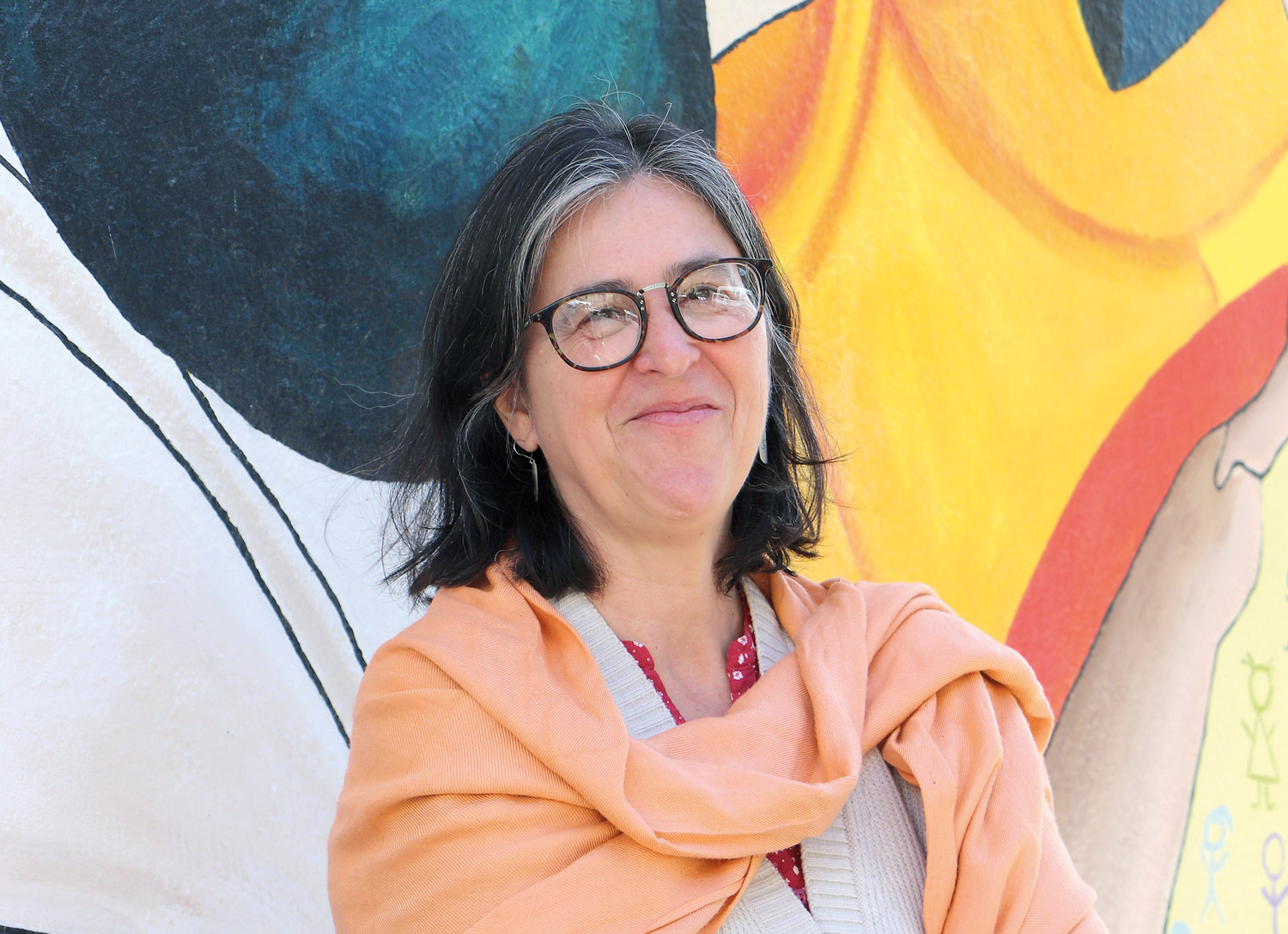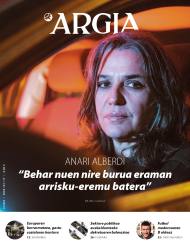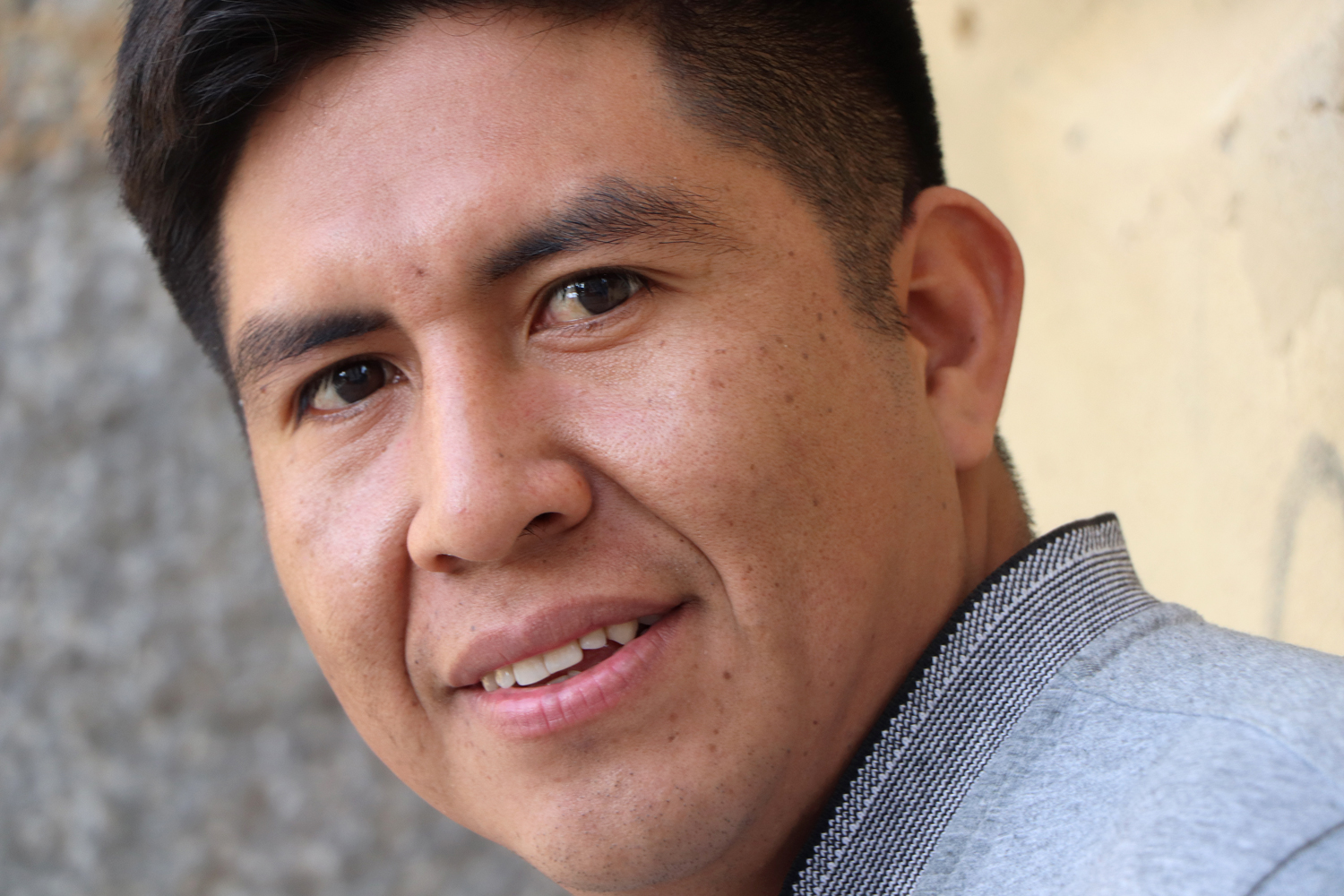“The children were ‘silent’, in Spanish, not in Guarani, but this language was not useful”
- Dr. Carolina Gandulfo. Born in Argentina, professor at the Faculty of Humanities at the Universidad Nacional del Nordeste. Last fall Garabide made an invited stay between us and told us about the Argentinian Guarani. It tells the experience of a college. They began to be literate in Spanish and the Guarani speakers “showed” themselves among the children.

At the time the Spaniards arrived, 35 were indigenous languages in Argentina. At present there are twelve speakers and they are all in danger of extinction. Two of them speak of non-indigenous populations: the Quechua spoken in Santiago del Estero and the Guarani used in Corrientos and other provinces. You don't know how many speakers have those two languages. According to some authors, 50% of the population of Corrientos speak of Guarani, and throughout the country there would be
a
million speakers, especially in the northeastern region. In his speech at Garabide, he said that by surprise they met the guarani. And it's true. I, for example, came to Lomas de González' school in December 2001. Lomas is a small rural village in the province of Corrientes. From that year on, in Corrientes, in the research department of the San José Institute, we began to make a diagnosis of the reading and writing skills of students aged 6 and 7 years. The first day I went to Lomas School, I held a meeting with the principal and the teachers to inform them of the research that we would begin in 2002. We had a pilot project proposal in hand to teach children how to read and write. We explained, we agreed on what we had, and we returned the next course to start implementing the pilot project. In 2002, they started working at that school. Yes. The first thing the teachers told us was that the students talked little because they were “rural.” Nobody told us that there was talk about Guarani. When we started to visit the first level classrooms, we found that the students talked about guarani, but when I didn't see the teachers. We also had
a
diagnosis, and the data told us that there was a clear performance difference between rural and urban students. This difference in performance was attributed to the socioeconomic situation of living in rural areas. Soon, the statistics taught us to establish our pilot project, which among the students was producing a huge amount, some were learning to read and write to a great extent, according to our didactic proposal, and others were not making progress.
“There are many types of prohibitions, there is no need to punish or censor explicitly for the use of a language”
Was the guarani? We didn't know yet. For example, that same year we had a meeting with the Minister of Education of the time. He was informed of the project and asked for permission to continue working according to
our proposal next year. We told him that the students of the school were in a fear that spoke of guaraní, and
he then: “... I know from a good source that in this rural area the guaraní is hardly used. As I know, some people learn, but consider it a second language. Only the elders speak the Guarani; among the young is about to disappear.” But
you have said, however, that you, the researchers, in their reluctance, the students served the guarani when the professor did not walk around... In fear. But nobody at school saw the use of the guarani, the minister of education also said that there was
no talk about the guarani. It was not a plot, it was not that everyone agreed – minister, teachers, researchers – to deny the presence of the Guarani. It didn't exist. It was a sociolinguistic situation, a linguistic conflict that was expressed by eliminating or making invisible one of the two languages. Of course, we already know what that language is. Because, as we said, for many students, Spanish was not their first language, let alone the only one. It was therefore clear that the Guarani should have some incidence.

What was this incidence of Guarani? We didn't know. I had
a lot of presence, I didn't have, I was of any kind. At that time, we couldn't tell how many had
Guarani as a first language, or how many were monolingual or bilingual. It seemed – and that was the only thing we could say at the time, “seemed” – that a considerable percentage of students had the Guarani language as their first language. However, at school they didn't talk about guaraní, and more, they were literate in Spanish, learning to read and write. Does it mean that the
Guarani area was due to a new proposal to learn how to read and write? Yes. We said “literacy”, as if this was mandatory in Spanish. This belief was implicitly lived as evidence: Spanish was the language of the Argentine State, the official language. “A State, a language.” With this conviction, in what language would children learn to read and write, except in Spanish? We were playing one of the pillars of the public school, one of the foundational goals, the teaching of Castilian, the language of the state of the nation. However, as the Guarani appeared to us, we began to question that hothealthy goal. I said the Guarani appeared to us, but that's a sort of saying, because the Guarani was there, or rather, the Guarani speakers, who schooled the children in Lomas. But we, 50 kilometres from Corrientes, in the capital, did not realize that in our country he only spoke Spanish. But there was the guarani, as they realized. Since then, how did they act at school? We decided we had to rethink the school. Our goal was literacy, we found a situation we didn't believe in, but how would we discard community language? We realized that there was a conflict between the two linguistic communities, and
our decision was to move forward, stay in Lomas school and work on literacy, but also taking into account the presence of the Guarani. Some school teachers also agreed with us and were willing to develop a renewed project. In the second year of the project, for example, one of the teachers began to speak in Guarani with their students, and then
more communicative situations emerged in Guarani. For example, speaking in Guarani with the school workers and the mothers of the students who participated in the sewing workshop. Did the use of the guarani then begin to appear? Partly, yes. However, the main novelty was the incorporation of the
guarani
into school acts. We soon found that this novelty was opposed to a social ban on the use of guarani in school. They gave all kinds of explanations and justifications. For example, some parents said that speaking in Guarani would make literacy difficult, would lead to failure. They believe that failure would not only be school failure, but also social failure: some who were convinced that, if not spoken and written in Spanish, there is no possibility of growing up in society. We know that one of the great objectives of the school
has
been the homogenization of society as
a tool to build the nation. I said “nation”, but I could say “nationality” or “national identity.” Language has always been a key element, it is still. Do you talk of a social ban, not only in the Guarani school, but nowhere? Look, when we realized there was a guarani, we started asking the teachers and we knew that they had their stories. They also told us that at school they were prevented from talking about guarani, and that parents also didn't allow them to talk about
guarani
at home. Today we asked them if they were able to speak in Guarani, and they told us that they understood it, but that they did not speak it; however, we saw that they were taken in Guarani… And we started working on the discourse of prohibition. What do you mean? That they were given some encouragement and that, in addition to the teachers, the parents and the citizens of the students began to count the penalties received at the school, to speak of guarani. When they referred to the ban, they always referred to the past. On the contrary, the present interiorized ban was not considered a ban. Most of the time they were prevented from keeping them in school and at home and, above all, childhood. As for the sanctions, we were told that they received it if they spoke to a serious person. Therefore, the children were not able to talk about the Guarani at school or at home, so from school they talked about going home or from home to school, or in the countryside, with the workers, or on the cork [store-bar]. And they would hide behind the door and hear the adults talking about guarani.
“The speakers themselves told us they didn’t know how to talk about Guarani, but we heard about Guarani.”
Link to the pilot project in
2002. So how many of you talked about guarani? Since sociolinguistics, we have not found Guarani studies. We know nothing about the areas of use, nor about the Lomas school. This only shows us the invisibility of the guarani. And we've realized that the academic world, the university, reinforces the invisibility processes of languages. However, anthropological studies conducted on indigenous languages show that the languages of the people have always been rejected in the private sphere and in the family, but outside, in the public and institutional sphere, only the official language of the nation
has
been present. The same is true of the Guarani, of course. Without data, therefore... We went for three years and we came from Correntientes to
Lomas de Gonzalez and, over time, more Guarani speakers appeared to us. This is not due to the transmission of language, or it is not because citizens were linked to learning from the Guarani heart. No, mostly it changed the way we looked. There was
no way to make a linguistic census, and the speakers themselves told us they didn't know how to talk about Guarani, but we talked about Guarani in some situations. But after three years, we didn't know that the school teachers were Guarani speakers, they weren't. After three years did you not know? It is surprising... We received the same answers as always: “I understand, but I don’t speak,” “My parents did speak, but I was not allowed to speak”, “I was forbidden, and I carry within the prohibition, the trauma inside, I understand, but I am not able to speak
a
Guarani followed”. But I said, even if you say no, you would already see the Guarani! So what does it mean to talk about Guarani? What is talking about Guarani in the eyes of teachers, students, fathers and mothers? And for us? And what is knowing Spanish? What language skills are we talking about? The four main skills are understanding, speaking, reading, writing… And in one language or another the inhabitants of Lomas didn’t have the same ability… We couldn’t conduct a linguistic census… However, we invented something. In 2004, I took three 6th graders and asked them if they would help me in the research. They said yes, and we started doing the first linguistic census. That is, the older students did the census of the younger ones, and from there we also realized their use, that they spoke. Until then, we had to constantly hear that the children were “silent”, because they didn’t speak Spanish, of course! On the other hand, they told us that around nobody talked about guarani, but many of them were Guarani speakers, and their parents, and many citizens too! The children were “silent”, in Spanish, not in Guarani, but this language was not useful. A certain linguistic ideology, that of Spanish, condemned the Guarani to invisibility, not to expertise. There are many kinds of prohibitions, no one needs to be punished or explicitly censored for the use of a language.
With love
In 2003, in the middle of the year, a second-grade teacher started telling students some things in Guarani in class. The students answered in Spanish and not in Guarani. That same year, in the second half, he moved to the first. He kept telling the students some things in Guarani, but in this case the students also started in Guarani. He asked us about it and told us that he did nothing extraordinary: “I do not plan anything, I only speak, I communicate with the children, normal, no more. The highest level laughed when he talked about guarani, they thought they would play.” As we observed, that teacher spoke in Guaraní when the student hugged or caressed, spoke in Guaraní the most intimate words, and when it came to starting some work, the explanation he did in Guaraní – sometimes even everything in guaraní – the students turned to Spanish. That is when communication erupts in Guarani! And those who were previously “silent” children then began to say they were charlatans, ingenious.












